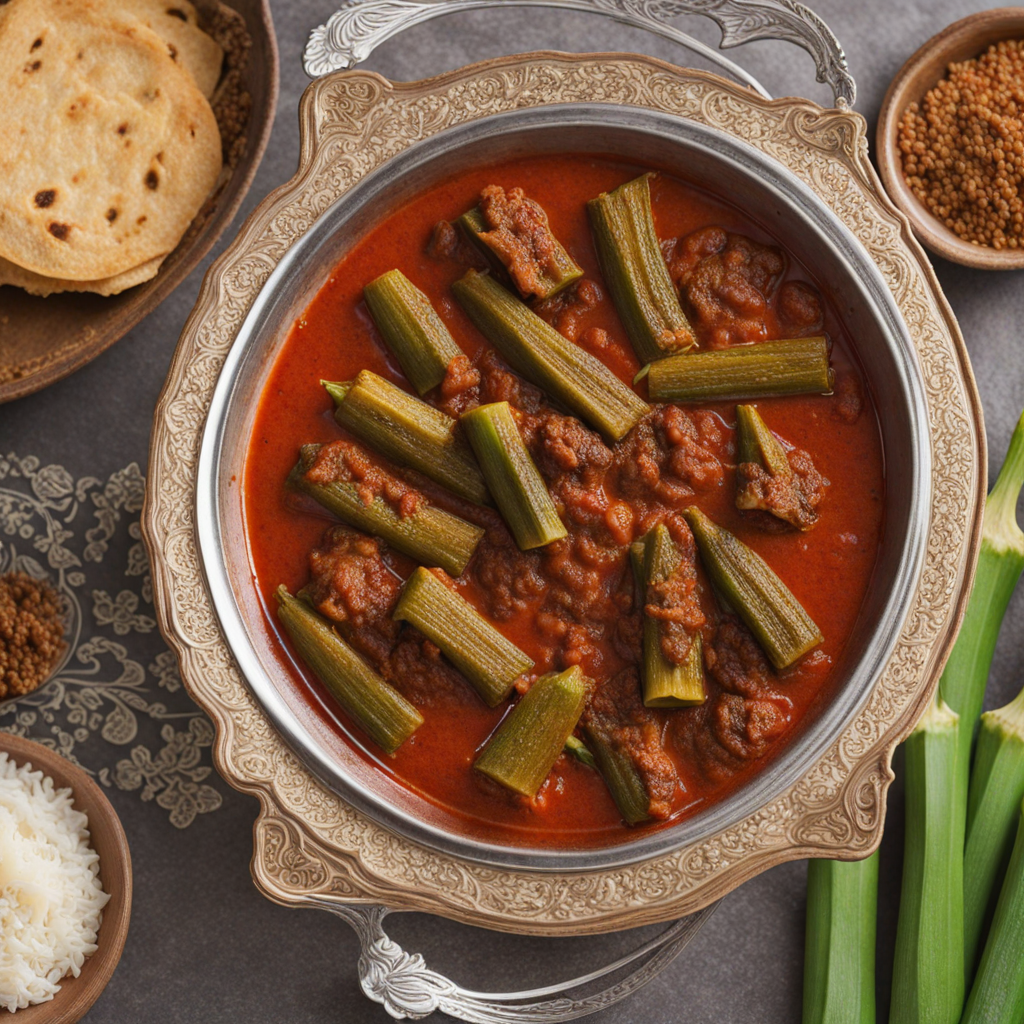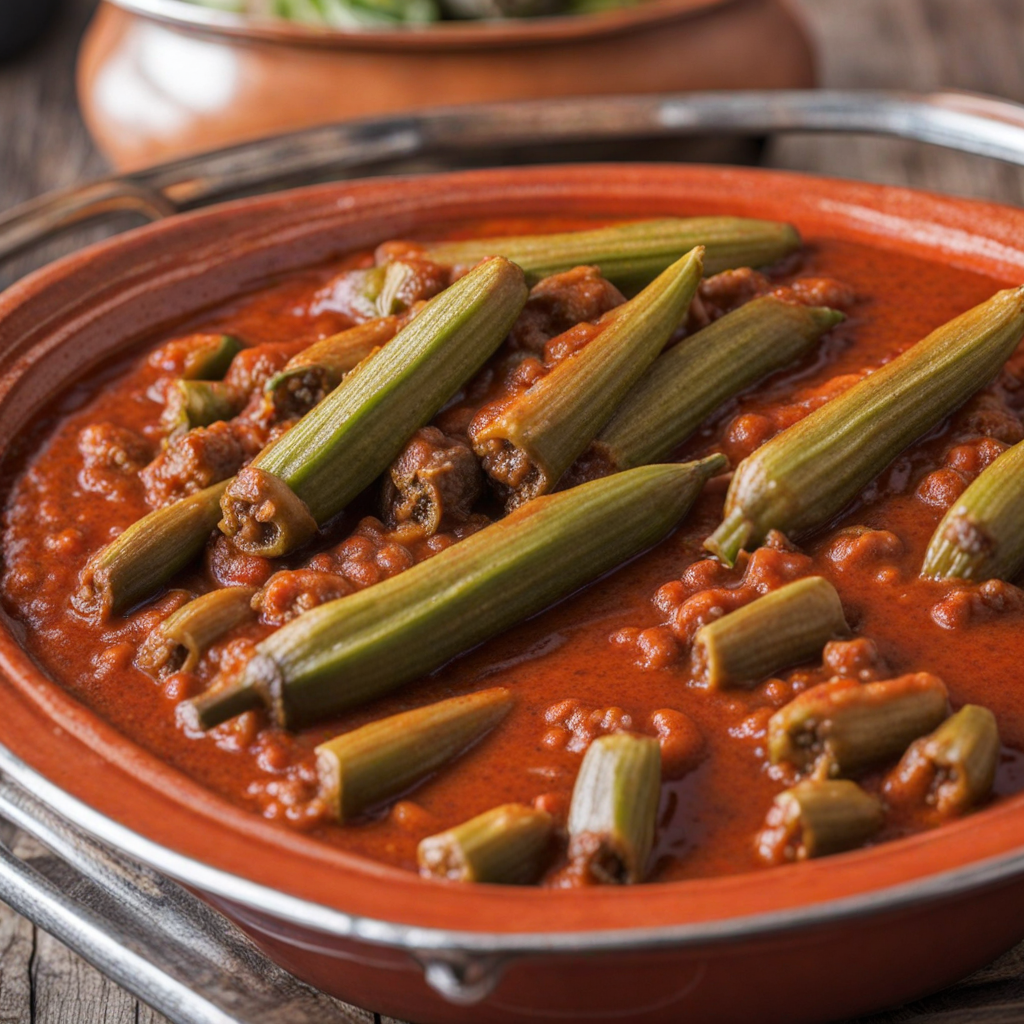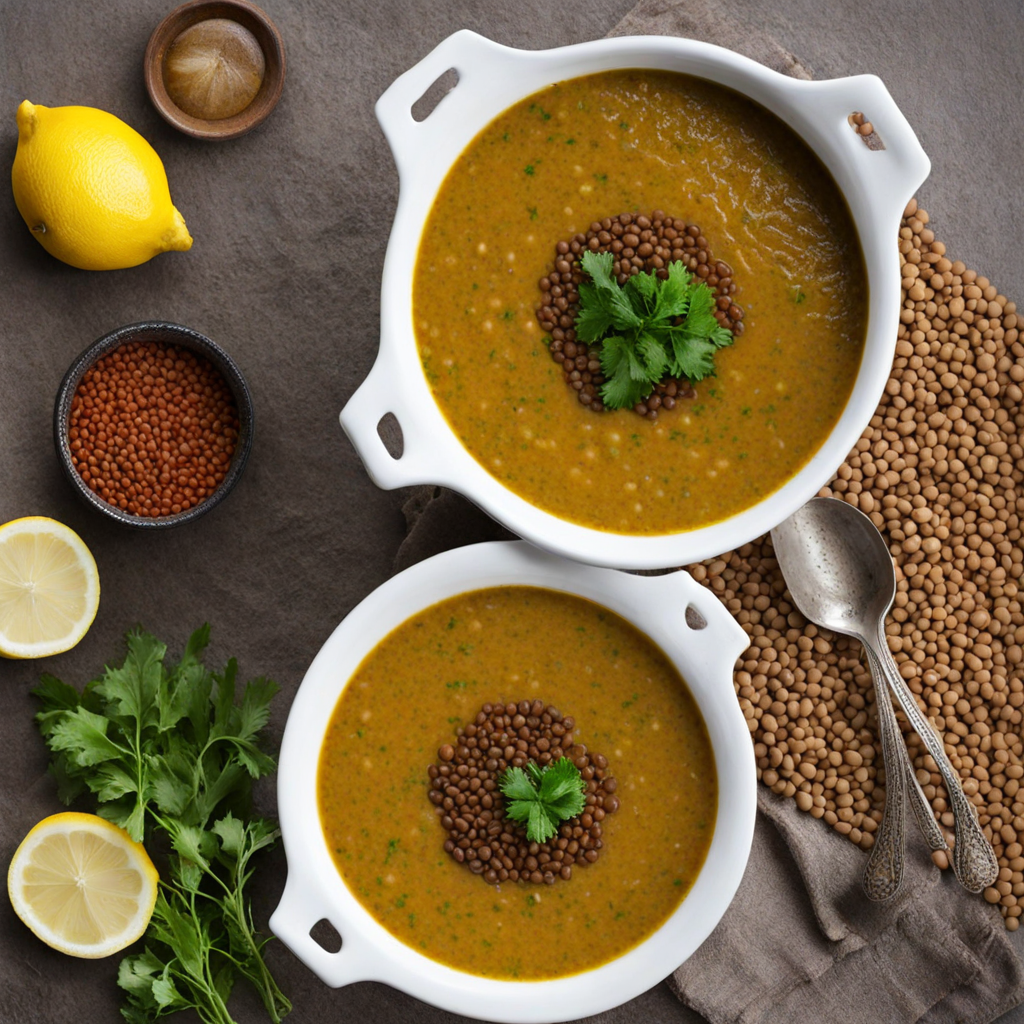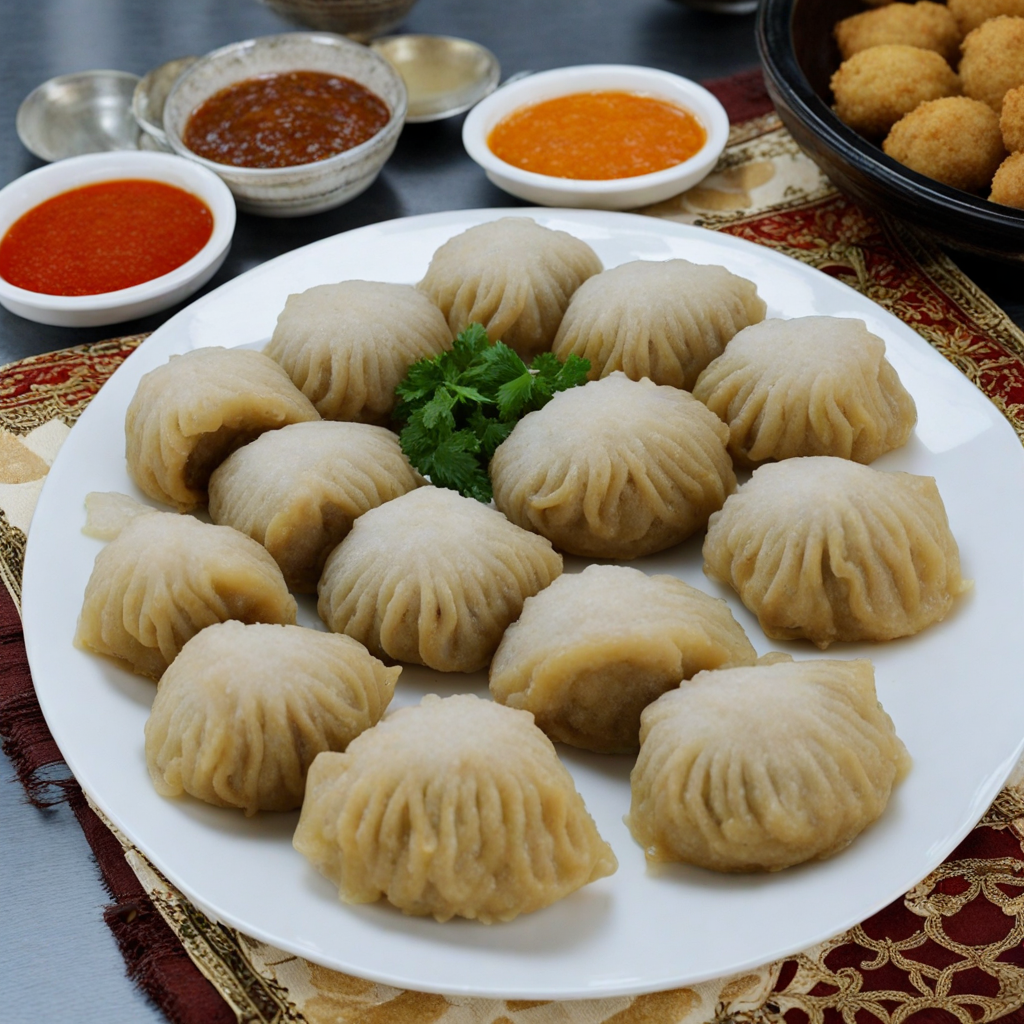Bamia
Bamia, a cherished dish from Iraq, is a vibrant stew that features tender okra, which is the star ingredient. The okra is often cooked to perfection, maintaining a delightful texture that contrasts beautifully with the rich, savory sauce. The dish typically incorporates a medley of spices, including cumin and coriander, which infuse the stew with an aromatic depth, while tomatoes provide a sweet and tangy base. The addition of garlic and onions enhances the flavor profile, creating a warm and inviting aroma that fills the kitchen as it simmers. Traditionally, Bamia is prepared with lamb or beef, which adds a hearty element to the dish. The meat is slow-cooked until it is melt-in-your-mouth tender, absorbing the flavors of the broth. This combination of meat and vegetables is often served over a bed of fluffy rice, allowing the grains to soak up the luscious sauce, making each bite a delightful experience. The dish is not just a meal; it's a celebration of the rich culinary heritage of Iraq, representing the warmth and hospitality of its people. For those looking to explore new tastes, Bamia offers a unique blend of flavors that is both comforting and exotic. The okra provides a distinctive taste that may be unfamiliar to some, while the spices and tender meat create a harmonious balance that is sure to tantalize the palate. Whether enjoyed at a family gathering or as a cozy weeknight dinner, Bamia invites you to dive into the heart of Iraqi cuisine and savor its delicious layers of flavor.
How It Became This Dish
Origins of بامية The food known as بامية (bamya), which translates to "okra" in English, has its roots in ancient agricultural practices and has become a staple in various cuisines, particularly in the Middle East. Historians trace the origins of okra back to West Africa, where it was cultivated as early as 2000 BC. From there, it spread to the Mediterranean region, including Iraq, through trade routes and exploration. The word itself is believed to have derived from the West African term "gombo," which is used to refer to the same vegetable. Its adaptability to different climates and soils made okra a popular choice for cultivation in diverse regions. In Iraq, بامية has been integrated into the culinary landscape for centuries. It is often associated with the vibrant and rich culinary traditions of the Arab world, where it is celebrated not only for its unique texture and flavor but also for its nutritional benefits. Okra is low in calories and rich in vitamins, minerals, and dietary fiber, making it a valuable addition to the Iraqi diet. \n\n Cultural Significance of بامية in Iraq In Iraq, بامية holds a significant place in both everyday meals and special occasions. It is typically prepared in a variety of ways, with the most popular being in a stew called "بامية باللحم" (bamya bil lahm), which combines okra with meat, often lamb or beef, and a rich tomato sauce. This dish is a staple during family gatherings and festive occasions, embodying the spirit of hospitality that is integral to Iraqi culture. Moreover, بامية is not just a dish; it represents a deeper cultural connection to the land and its agricultural heritage. The preparation and sharing of meals featuring okra often serve as a medium for family and community bonding. It is common for families to gather in the kitchen to cook together, passing down recipes and traditions from one generation to the next. The act of cooking بامية can evoke memories of shared meals and familial love, reinforcing its importance beyond mere sustenance. \n\n Development Over Time As the centuries progressed, the preparation and presentation of بامية in Iraq evolved, influenced by various historical events and cultural exchanges. The Ottoman Empire, which ruled over Iraq for several centuries, introduced new spices and cooking techniques that enriched Iraqi cuisine. This period saw the incorporation of additional ingredients into traditional بامية dishes, such as garlic, lemon, and various spices, which enhanced the flavor profile and made it even more appealing. During the 20th century, as globalization began to influence food trends, the availability of fresh produce and spices expanded. This shift allowed for more experimentation with بامية recipes, leading to variations that incorporate local ingredients and tastes. For instance, some families began to add regional spices like sumac or pomegranate molasses to their بامية dishes, creating unique flavors that reflect the diversity of Iraqi cuisine. \n\n Modern-Day بامية In contemporary Iraq, بامية continues to be an essential part of the diet, but it has also found a place within the broader context of global cuisine. Iraqi immigrants and diaspora communities have introduced their culinary traditions to new countries, including the United States, Canada, and European nations. As a result, بامية has been embraced by diverse audiences, often featured in Middle Eastern restaurants and food festivals worldwide. Additionally, with the rise of health consciousness among consumers, okra is gaining recognition for its health benefits, including its potential to aid digestion and lower blood sugar levels. This has led to a resurgence of interest in traditional recipes that highlight بامية, encouraging a new generation to appreciate its versatility and nutritional value. \n\n Conclusion: A Symbol of Resilience and Tradition Beyond its culinary attributes, بامية symbolizes resilience and tradition for many Iraqis. It serves as a reminder of the rich agricultural history of the region and the importance of maintaining cultural heritage through food. The dish's ability to adapt over time, while remaining true to its roots, exemplifies the spirit of Iraqi cuisine as a whole. In summary, بامية is more than just a vegetable or a dish; it is a cultural artifact that has traveled through history, adapting to changes while preserving the essence of Iraqi identity. Its presence on the dining table signifies not only nourishment but also the bonds of family and community, reflecting the enduring legacy of Iraqi culinary traditions. As the world continues to evolve, بامية will likely remain a cherished component of Iraqi culture, celebrated for its flavors and the stories it carries.
You may like
Discover local flavors from Iraq







